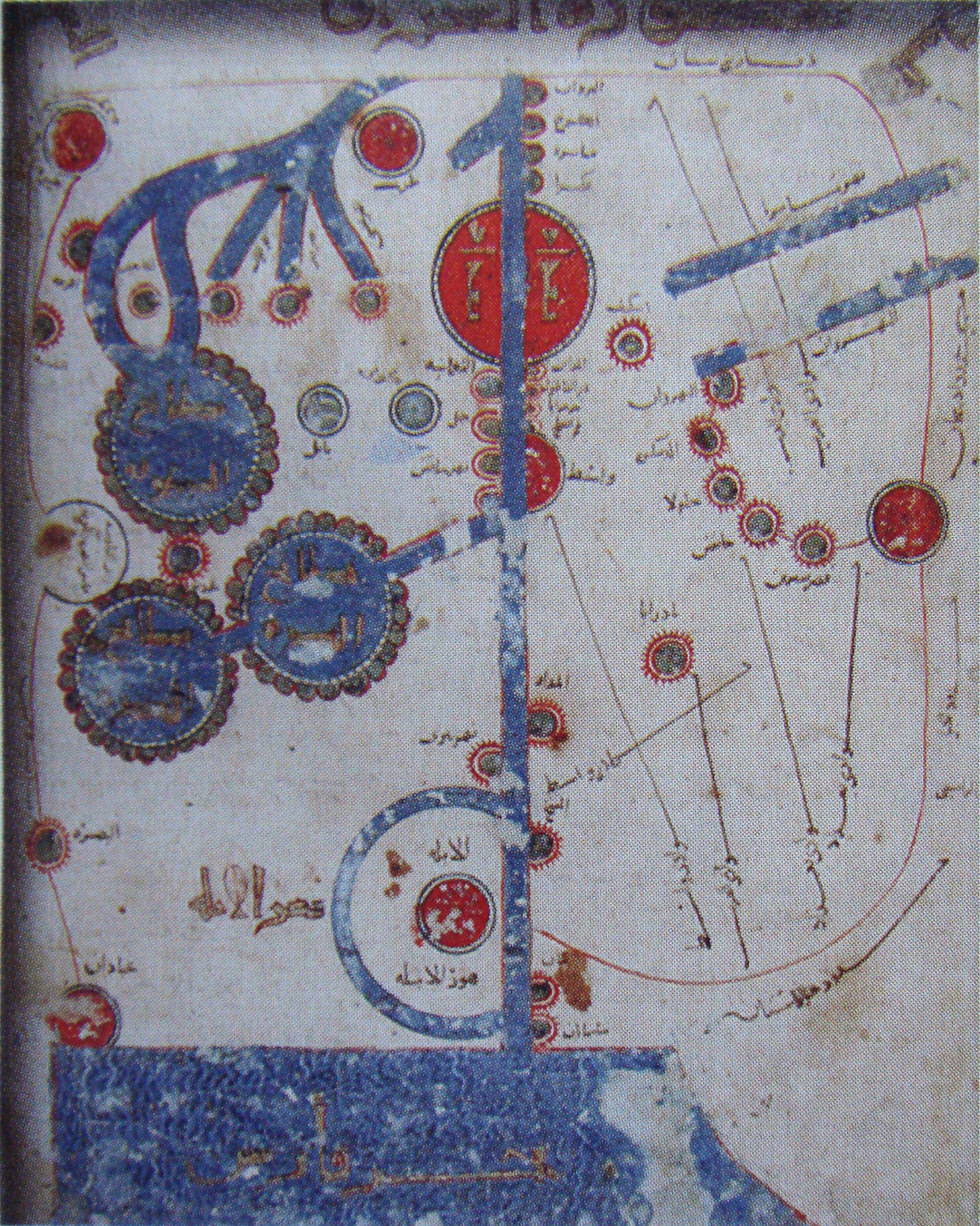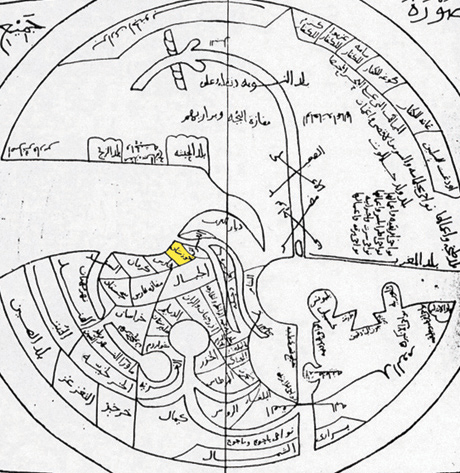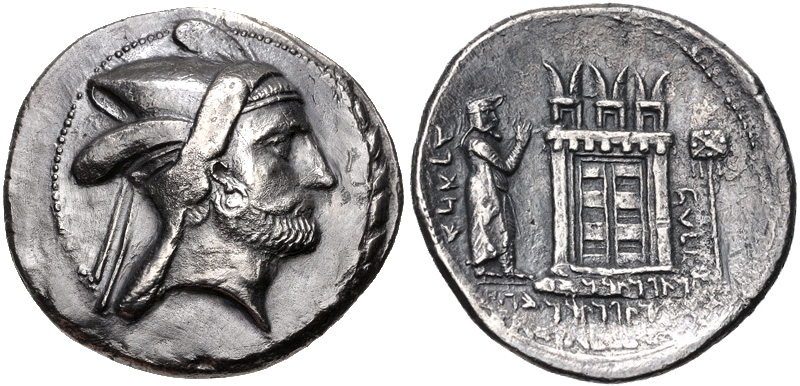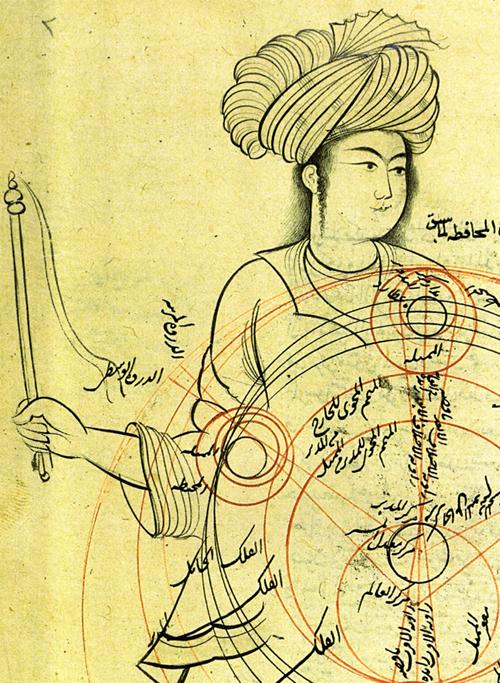|
Istakhri
Abu Ishaq Ibrahim ibn Muhammad al-Farisi al-Istakhri () (also ''Estakhri'', fa, استخری, i.e. from the Iranian city of Istakhr, b. - d. 346 AH/AD 957) was a 10th-century travel-author and geographer who wrote valuable accounts in Arabic of the many Muslim territories he visited during the Abbasid era of the Islamic Golden Age. There is no consensus regarding his origin. Some sources describe him as Persian, while others state he was Arab. IV:222b-223b. The ''Encyclopedia Iranica'' states: "Biographical data are very meager. From his ''nesbas'' (attributive names) he appears to have been a native of Eṣṭaḵr in Fārs, but it is not known whether he was Persian". VIII(6):646-647 (I have used the updated online version). Istakhri's account of windmills is the earliest known. Istakhri met the celebrated traveller-geographer Ibn Hawqal, while travelling, and Ibn Hawqal incorporated the work of Istakhri in his book ''Kitab al-Surat al-Ard''. Works Istakhri's two surviv ... [...More Info...] [...Related Items...] OR: [Wikipedia] [Google] [Baidu] |
Ibn Hawqal
Muḥammad Abū’l-Qāsim Ibn Ḥawqal (), also known as Abū al-Qāsim b. ʻAlī Ibn Ḥawqal al-Naṣībī, born in Nisibis, Upper Mesopotamia; was a 10th-century Arab Muslim writer, geographer, and chronicler who travelled during the years 943 to 969 AD.Ludwig W. Adamec (2009), ''Historical Dictionary of Islam'', p.137. Scarecrow Press. . His famous work, written in 977 AD, is called (; "The face of the Earth"). The date of his death, known from his writings, was after 368 AH/978 AD. Biography Details known of Ibn Hawqal's life are extrapolated from his book. He spent the last 30 years of his life traveling to remote parts of Asia and Africa and writing about what he saw. One journey brought him 20° south of the equator along the East African coast where he discovered large populations in regions the ancient Greek writers had deemed, from logic rather than knowledge, were uninhabitable. Ṣūrat al-’Arḍ Ibn Hawqal based his great work of geography on a revision ... [...More Info...] [...Related Items...] OR: [Wikipedia] [Google] [Baidu] |
Geography In Medieval Islam
Medieval Islamic geography and cartography refer to the study of geography and cartography in the Muslim world during the Islamic Golden Age (variously dated between the 8th century and 16th century). Muslim scholars made advances to the map-making traditions of earlier cultures, particularly the Hellenistic geographers Ptolemy and Marinus of Tyre, combined with what explorers and merchants learned in their travels across the Old World ( Afro-Eurasia). Islamic geography had three major fields: exploration and navigation, physical geography, and cartography and mathematical geography. Islamic geography reached its apex with Muhammad al-Idrisi in the 12th century. History Islamic geography began in the 8th century, influenced by Hellenistic geography, combined with what explorers and merchants learned in their travels across the Old World ( Afro-Eurasia). Muslim scholars engaged in extensive exploration and navigation during the 9th-12th centuries, including journeys across the Mus ... [...More Info...] [...Related Items...] OR: [Wikipedia] [Google] [Baidu] |
Islamic Geography
Medieval Islamic geography and cartography refer to the study of geography and cartography in the Muslim world during the Islamic Golden Age (variously dated between the 8th century and 16th century). Muslim scholars made advances to the map-making traditions of earlier cultures, particularly the Hellenistic geographers Ptolemy and Marinus of Tyre, combined with what explorers and merchants learned in their travels across the Old World ( Afro-Eurasia). Islamic geography had three major fields: exploration and navigation, physical geography, and cartography and mathematical geography. Islamic geography reached its apex with Muhammad al-Idrisi in the 12th century. History Islamic geography began in the 8th century, influenced by Hellenistic geography, combined with what explorers and merchants learned in their travels across the Old World ( Afro-Eurasia). Muslim scholars engaged in extensive exploration and navigation during the 9th-12th centuries, including journeys across the Mus ... [...More Info...] [...Related Items...] OR: [Wikipedia] [Google] [Baidu] |
Istakhr
Istakhr (Middle Persian romanized: ''Stakhr'', fa, اصطخر, translit=Istakhr also spelt استخر in modern literature) was an ancient city in Fars province, north of Persepolis in southwestern Iran. It flourished as the capital of the Persian ''Frataraka'' governors and Kings of Persis from the third century BC to the early 3rd century AD. It reached its apex under the Sasanian Empire (224-651 AD), and was the hometown of the Sasanian dynasty. Istakhr briefly served as the first capital of the Sasanian Empire from 224 to 226 AD and then as principal city, region, and religious centre of the Sasanian province of Pars (Sasanian province), Pars. During the Arab conquest of Iran, Istakhr was noted for its stiff resistance, which resulted in the death of many of its inhabitants. Istakhr remained a stronghold of Zoroastrianism long after the conquests, and remained relatively important in the early Islamic era. It went into gradual decline after the founding of nearby Shiraz, befo ... [...More Info...] [...Related Items...] OR: [Wikipedia] [Google] [Baidu] |
Abu Zayd Al-Balkhi
Abu Zayd Ahmed ibn Sahl Balkhi ( fa, ابو زید احمد بن سهل بلخی) was a Persian Muslim polymath: a geographer, mathematician, physician, psychologist and scientist. Born in 850 CE in Shamistiyan, in the province of Balkh, Greater Khorasan, he was a disciple of al-Kindi. He also founded the "Balkhī school" of terrestrial mapping in Baghdad. Al-Balkhi is believed to have been the first to diagnose that mental illness can have psychological and physiological causes and he was the first to typify four types of emotional disorders: 1) fear and anxiety, 2) anger and aggression, 3) sadness and depression, and 4) obsessions. Biography According to Abu Muhammad al-Hassan ibn al-Waziri, who was a student of the polymath, Abu Zayd al-Balkhi was a man whose face was covered in scars that he acquired following a bout with smallpox. In addition to this, he had a reserved and isolated character, leading scholars to have a lack of knowledge on his personal life. Approximately ... [...More Info...] [...Related Items...] OR: [Wikipedia] [Google] [Baidu] |
List Of Iranian Scientists
The following is a non-comprehensive list of Iranian scientists, engineers, and scholars who lived from antiquity up until the beginning of the modern age. For the modern era, see List of contemporary Iranian scientists, scholars, and engineers. For mathematicians of any era, see List of Iranian mathematicians. (A person may appear on two lists, e.g. Abū Ja'far al-Khāzin.) A * Abdul Qadir Gilani (12th century) theologian and philosopher * Abu al-Qasim Muqane'i (10th century) physician * Abu Dawood (c. 817–889), Islamic scholar * Abu Hanifa (699–767), Islamic scholar * Abu Said Gorgani (10th century) * 'Adud al-Dawla (936–983), scientific patron * Ahmad ibn Farrokh (12th century), physician * Ahmad ibn 'Imad al-Din (11th century), physician and chemist * Alavi Shirazi (1670–1747), royal physician to Mughal Empire of South Asia * Amuli, Muhammad ibn Mahmud (c. 1300–1352), physician * Abū Ja'far al-Khāzin (900–971), mathematician and astronomer * Ansari, K ... [...More Info...] [...Related Items...] OR: [Wikipedia] [Google] [Baidu] |
Al-Maqdisi
Shams al-Dīn Abū ʿAbd Allāh Muḥammad ibn Aḥmad ibn Abī Bakr al-Maqdisī ( ar, شَمْس ٱلدِّيْن أَبُو عَبْد ٱلله مُحَمَّد ابْن أَحْمَد ابْن أَبِي بَكْر ٱلْمَقْدِسِي), better known as al-Maqdisī ( ar, links=no, ٱلْمَقْدِسِي) or al-Muqaddasī ( ar, links=no, ٱلْمُقَدَّسِي), ( – 991) was a medieval Arab geographer, author of ''Aḥsan al-taqāsīm fī maʿrifat al-aqālīm'' (''The Best Divisions in the Knowledge of the Regions''), as well as author of the book, ''Description of Syria (Including Palestine)''. He is one of the earliest known historical figures to self-identify as a Palestinian during his travels. Biography Sources Outside of his own work, there is little biographical information available about al-Maqdisi.Miquel 1993, p. 492. He is neither found in the voluminous biographies of Ibn Khallikan (d. 1282) nor were the aspects of his life mentioned in the works of his ... [...More Info...] [...Related Items...] OR: [Wikipedia] [Google] [Baidu] |
The Encyclopedia Of Islam
The ''Encyclopaedia of Islam'' (''EI'') is an encyclopaedia of the academic discipline of Islamic studies published by Brill. It is considered to be the standard reference work in the field of Islamic studies. The first edition was published in 1913–1938, the second in 1954–2005, and the third was begun in 2007. Content According to Brill, the ''EI'' includes "articles on distinguished Muslims of every age and land, on tribes and dynasties, on the crafts and sciences, on political and religious institutions, on the geography, ethnography, flora and fauna of the various countries and on the history, topography and monuments of the major towns and cities. In its geographical and historical scope it encompasses the old Arabo-Islamic empire, the Islamic countries of Iran, Central Asia, the Indian sub-continent and Indonesia, the Ottoman Empire and all other Islamic countries". Standing ''EI'' is considered to be the standard reference work in the field of Islamic studies. E ... [...More Info...] [...Related Items...] OR: [Wikipedia] [Google] [Baidu] |
Al-Masudi
Al-Mas'udi ( ar, أَبُو ٱلْحَسَن عَلِيّ ٱبْن ٱلْحُسَيْن ٱبْن عَلِيّ ٱلْمَسْعُودِيّ, '; –956) was an Arab historian, geographer and traveler. He is sometimes referred to as the "Herodotus of the Arabs". A polymath and prolific author of over twenty works on theology, history (Islamic and universal), geography, natural science and philosophy, his celebrated magnum opus '' Murūj al-Dhahab wa-Ma'ādin al-Jawhar'' ( ar, مُرُوج ٱلذَّهَب وَمَعَادِن ٱلْجَوْهَر, link=no), combines universal history with scientific geography, social commentary and biography, and is published in English in a multi-volume series as '' The Meadows of Gold and Mines of Gems''. Birth, travels and literary output Apart from what Al-Mas'udi writes of himself little is known. Born in Baghdad, he was descended from Abdullah Ibn Mas'ud, a companion of Muhammad. He mentions many scholar associates met on his travels thr ... [...More Info...] [...Related Items...] OR: [Wikipedia] [Google] [Baidu] |
Michael Jan De Goeje
Michael Jan de Goeje (August 13, 1836 – May 17, 1909) was a Dutch orientalist focusing on Arabia and Islam. Early life Michael Jan de Goeje was born in Dronrijp, Friesland. He devoted himself at an early age to the study of oriental languages and became especially proficient in Arabic, under the guidance of Reinhart Dozy and Theodor Juynboll, to whom he was afterwards an intimate friend and colleague. He took his degree of doctor at Leiden in 1860, and then studied for a year in Oxford, where he examined and collated the Bodleian manuscripts of al-Idrisi (part being published in 1866, in collaboration with Dozy, as ''Description de l'Afrique et de l'Espagne''). About the same time he wrote ''Mémoires de l'histoire et de la géographie orientales'', and edited ''Expugnatio regionum''. In 1883, on the death of Dozy, he became Arabic professor at Leiden, retiring in 1906. Career Though perhaps not a teacher of the first order, he wielded great influence during his long ten ... [...More Info...] [...Related Items...] OR: [Wikipedia] [Google] [Baidu] |
Al-Ya'qubi
ʾAbū l-ʿAbbās ʾAḥmad bin ʾAbī Yaʿqūb bin Ǧaʿfar bin Wahb bin Waḍīḥ al-Yaʿqūbī (died 897/8), commonly referred to simply by his nisba al-Yaʿqūbī, was an Arab Muslim geographer and perhaps the first historian of world culture in the Abbasid Caliphate. Life He was born in Baghdad as the great-grandson of Wadih, the freedman of the caliph Al-Mansur. Until 873 he lived in Armenia and Khorasan, working under the patronage of the Tahirids Governors; then he traveled to India, Egypt and the Maghreb, and died in Egypt. He died in AH 284 (897/8). His sympathies with Ahl al-Bayt are found throughout his works. In 872, he lists the kingdoms of Bilād as-Sūdān, including Ghana, Gao, and Kanem. Works * ''Ta'rikh ibn Wadih'' (''Chronicle of Ibn Wadih'') * '' Kitab al-Buldan'' (''Book of the Countries'') - biology, contains a description of the Maghreb The Maghreb (; ar, الْمَغْرِب, al-Maghrib, lit=the west), also known as the Arab Maghreb ... [...More Info...] [...Related Items...] OR: [Wikipedia] [Google] [Baidu] |
Ibn Rustah
Ahmad ibn Rustah Isfahani ( fa, احمد ابن رسته اصفهانی ''Aḥmad ibn Rusta Iṣfahānī''), more commonly known as Ibn Rustah (, also spelled ''Ibn Rusta'' and ''Ibn Ruste''), was a tenth-century Persian explorer and geographer born in Rosta district, Isfahan, Persia. He wrote a geographical compendium known as ''Kitāb al-A‘lāq al-Nafīsa'' ( ar, كتاب الأعلاق النفيسة, ''Book of Precious Records''). The information on his home town of Isfahan is especially extensive and valuable. Ibn Rustah states that, while for other lands he had to depend on second-hand reports, often acquired with great difficulty and with no means of checking their veracity, for Isfahan he could use his own experience and observations or statements from others known to be reliable. Thus we have a description of the twenty districts (''rostaqs'') of Isfahan containing details not found in other geographers' works. Concerning the town itself, we learn that it was perfectly ... [...More Info...] [...Related Items...] OR: [Wikipedia] [Google] [Baidu] |





.jpg)